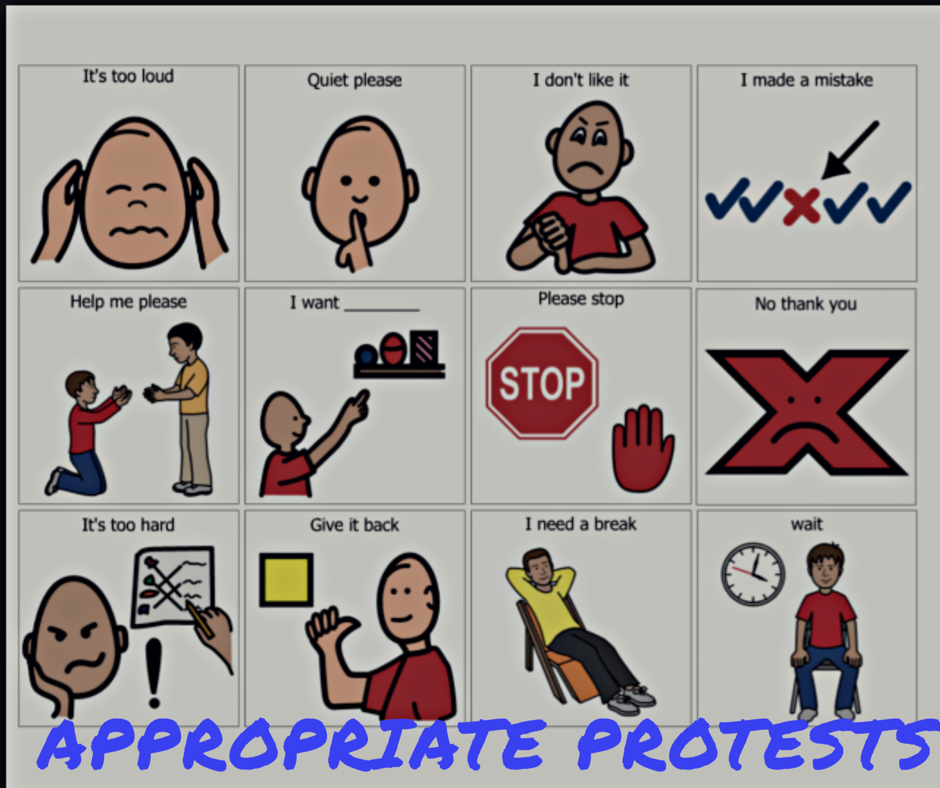
Behavior is communication. It is our students’ way of telling us how they feel or what they need. Behavior can have many different forms but what it looks like is not as important as what it’s trying to tell us. The function of the behavior is the part that tells us WHY the behavior is happening. Sometimes, the form of the behavior looks different but the function is the same. A child who is trying to say, “I don’t want to do this” might hit, throw, or scream depending on the situation. Alternatively, behaviors that have the same form (i.e., they look the same) might actually have different functions (i.e., be saying different things). Functional communication is key.
As Behavior Analysts, we look to take a function-based approach in reducing negative behavior. This means that instead of just eliminating behaviors that might be inappropriate, we try to get to the ‘why’ of the behavior. Looking at behavior as communication gives us a way of understanding our students and helping them express themselves even better.
Reinforce the Communication
If it was determined that a behavior should be reduced (see When is Behavior Worth Targeting?), then it is our responsibility to teach an appropriate replacement behavior. Since behavior is communication, then one of the most important replacement skills is communication. If we can decode the function of the behavior, then we can find a more appropriate, functional phrase to teach the student. Communication can be verbal, using sign language, or exchanging a picture. We can change the form of a behavior with traditional means (like extinction) but without replacing the ‘why’ of a behavior, a different form will pop up in its place.
When you’ve chosen a functional phrase to teach the student, it’s important to reinforce the phrase each and every time the student uses it INSTEAD of engaging in negative behavior. If we’ve determined that the function of the behavior is such a powerful motivator, then that’s exactly what we should use to reinforce the communication! If the child wants escape, teach the child to ask for escape and then reinforce with…ESCAPE! If the child wants attention, teach the child to ask for attention and then reinforce with….ATTENTION!
Steps to Teaching Functional Communication
- Determine the targeted behavior. Example: A child’s negative behavior is self-injury when presented with a task demand.
- Complete a functional assessment (FA) to determine the function of the behavior. Example: FA determined that the “why” is escape from demand.
- Choose an alternative, functionally equivalent phrase to teach the child. Example: Teach the child to say, “I don’t want to” either verbally or with pictures or signs. Prompt this if necessary to make it errorless.
- Practice and reinforce. Example: Each time the child uses the phrase, “I don’t want to” when presented with a task demand instead of self-injury – reinforce with escape from the task (for a few minutes).
- Once the child is using it spontaneously and independently, you can begin to teach the child tolerance and delay (i.e., when the answer is, “No” or “Not now”).

Teach Advocacy
A traditional approach to reducing negative behavior (especially when the function is escape) is to use escape extinction. This creates a situation where children become accustomed to doing things that make them uncomfortable or that they don’t want to do. When reducing a behavior that is escape-related, it is even more important to teach our students an appropriate way to protest something they don’t want. We want our kiddos to feel like they can voice their opinions, that they are heard, and that sometimes they have to do hard things anyway.
All problem behaviors have a related communication alternative. For some ideas on phrases to replace them with, see below:
Related Communication Alternatives to Problem Behaviour
- “I need help” –> attention/tangible
- “I don’t like this” –> escape
- “I would rather be doing that” –> tangible
- “Hey, over here” –> attention
- “I don’t understand” –> attention/escape
- “You’re standing too close. Please move” –> tangible/escape
- “Its way too cold in here today” –> tangible/sensory
- “I don’t feel well” –> tangible
- “You’re supposed to do it this way” –> tangible
- “This is so boring” –> escape
- “Who are you?” –> tangible
- “What’s in it for me?” –> attention/tangible
- “I can make my own choices thank you” –> escape
- “It’s been a rough morning and I really just need a break” –> escape
- “Can I have a taste of that lasagna?” –> tangible
- Etc.
Contrive and create as many opportunities as you can for your student to practice using the functional communication phrases. As you teach, monitor the frequency of negative behavior – hopefully as the frequency of FCT increases, the frequency of negative behavior decreases!
Check out our YouTube Video on using FCT!


Pingback: Functions of Behaviour - How to ABA
Could you send me directions on tolerance and delay?
Hi Penny, check out our YouTube channel – we have a few videos on Tolerance and Delay posted there (here is one of them: https://www.youtube.com/watch?v=4gejKHxR8Aw). We have more information and programs for you to use in the Bx Resource as well!
How would you teach a child to ask for attention appropriately in a group setting? He is seeking attention from peers and teachers
Think about what you want the replacement skill to be – waiting his turn? Raising his hand? etc. Then, teach the skill using BST at a different (contrived) time. Offer lots of opportunity for role play, modelling, and feedback. Then, you can prime him of the skill before the group setting (“Remember, we practiced how to raise your hand when you want to talk”) and include lots of reinforcement for showing the skill in a more natural setting.